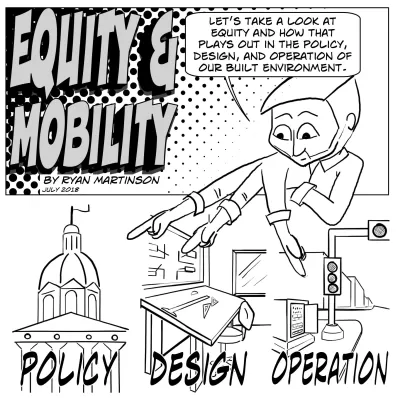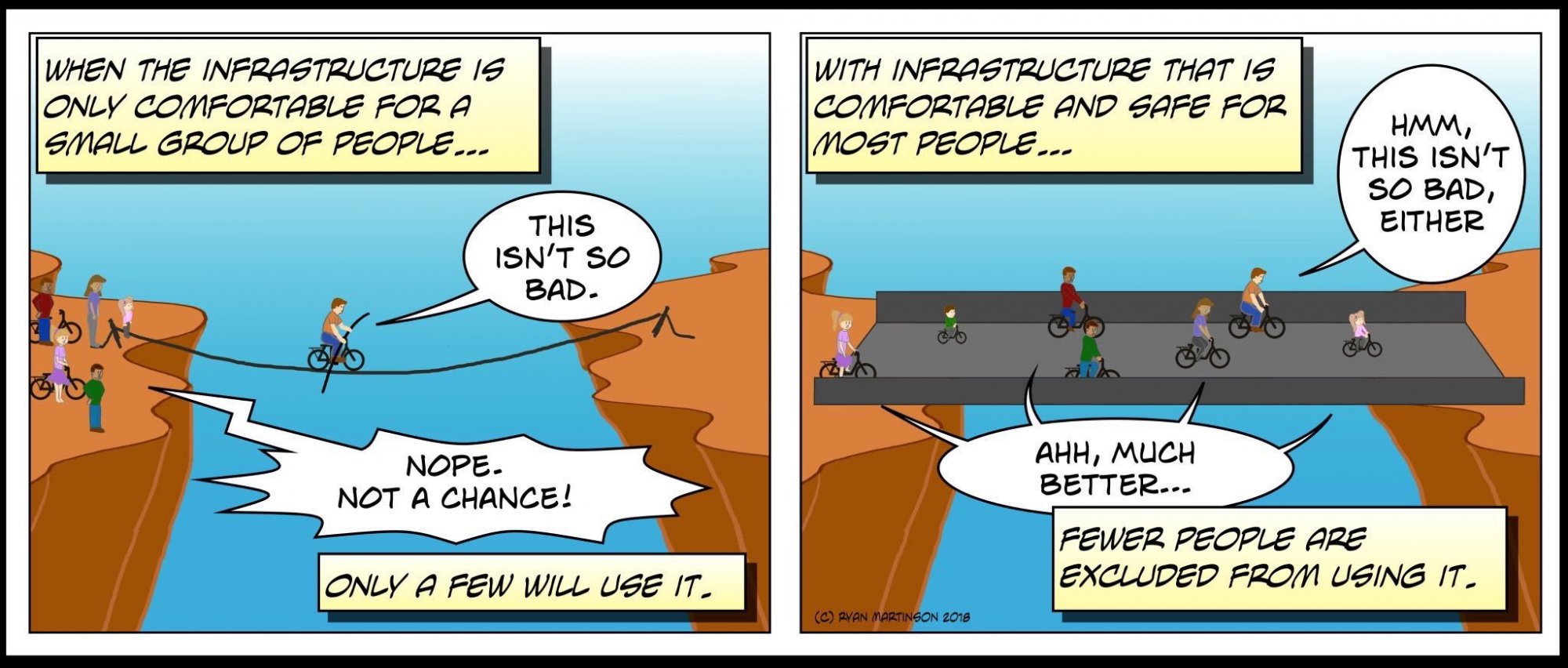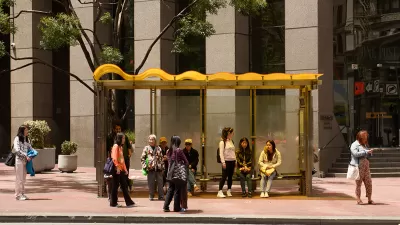What does "equity" mean for transportation professionals? This is discussed in a 12-page comic published in the Canadian Institute of Transportation Engineers newsletter.

Engineer Ryan Martinson uses his cartooning skills to explore why and how to better incorporate social equity goals into transportation planning Equity & Mobility, a 12-page comic article published in the Summer issue of Transportation Talk," the Canadian Institute of Transportation Engineer's quarterly newsletter.

The article describes the differences between equality (everybody is treated equally, even if they they have different needs and abilities) and equity (people are treated fairly, taking into account their different needs and abilities), discusses how planning decisions allocate public resources and opportunities, explores how power imbalances can bias decision-making, how the definition of "design users" can affect who is served or excluded by a transport system, and examines how methods often used to evaluate transportation system performance tend to favor faster modes (particularly automobile travel) over more affordable and inclusive modes (such as walking, bicycling and public transit). Martinson also describes specific ways that individuals, professional organizations, agencies, and the public can better achieve transportation equity goals.

This is a timely and important issue for planning professionals. Planning decisions allocate valuable and scarce public resources, and affect people's economic and social opportunities. A growing body of research indicates that the mobility and accessibility options available in a community significantly affect resident's economic mobility, that is, the chance that children born in lower-income households become more economically successful as adults.
FULL STORY: Equity & Mobility

Planetizen Federal Action Tracker
A weekly monitor of how Trump’s orders and actions are impacting planners and planning in America.

Maui's Vacation Rental Debate Turns Ugly
Verbal attacks, misinformation campaigns and fistfights plague a high-stakes debate to convert thousands of vacation rentals into long-term housing.

San Francisco Suspends Traffic Calming Amidst Record Deaths
Citing “a challenging fiscal landscape,” the city will cease the program on the heels of 42 traffic deaths, including 24 pedestrians.

Amtrak Rolls Out New Orleans to Alabama “Mardi Gras” Train
The new service will operate morning and evening departures between Mobile and New Orleans.

The Subversive Car-Free Guide to Trump's Great American Road Trip
Car-free ways to access Chicagoland’s best tourist attractions.

San Antonio and Austin are Fusing Into one Massive Megaregion
The region spanning the two central Texas cities is growing fast, posing challenges for local infrastructure and water supplies.
Urban Design for Planners 1: Software Tools
This six-course series explores essential urban design concepts using open source software and equips planners with the tools they need to participate fully in the urban design process.
Planning for Universal Design
Learn the tools for implementing Universal Design in planning regulations.
Heyer Gruel & Associates PA
JM Goldson LLC
Custer County Colorado
City of Camden Redevelopment Agency
City of Astoria
Transportation Research & Education Center (TREC) at Portland State University
Jefferson Parish Government
Camden Redevelopment Agency
City of Claremont





























